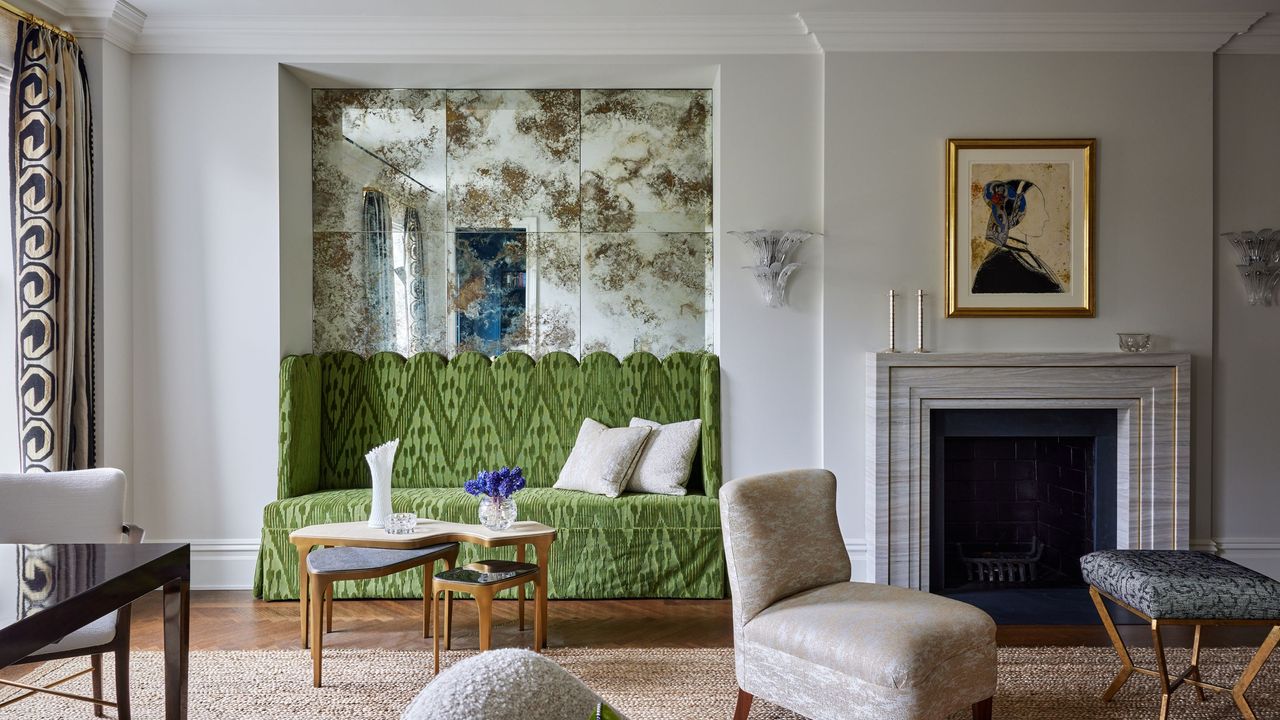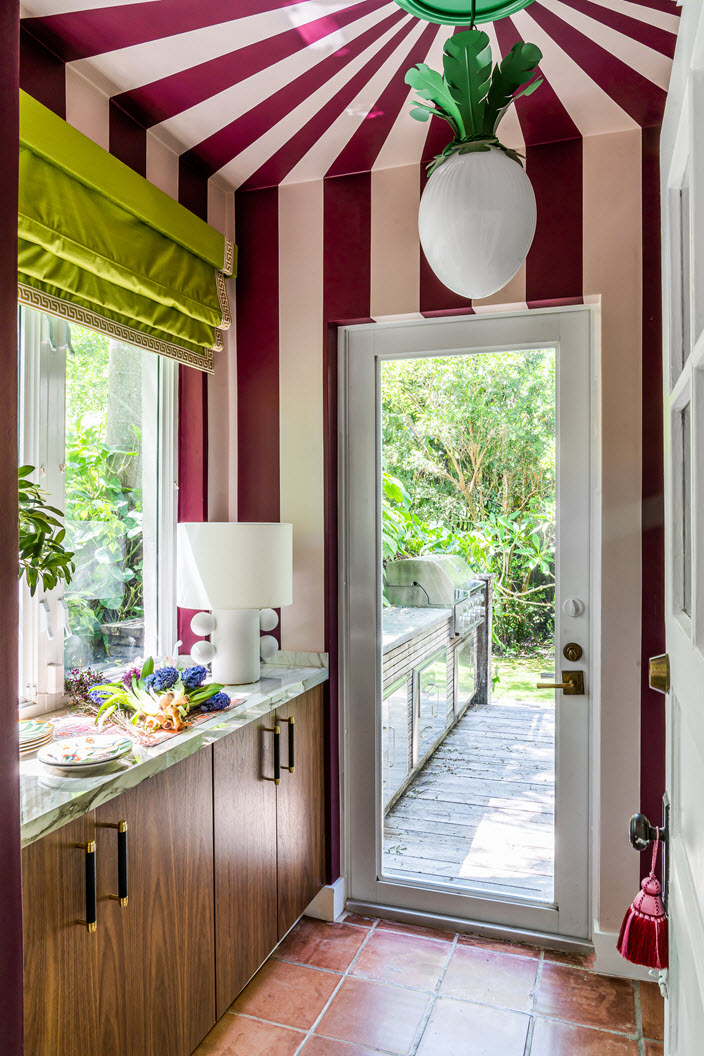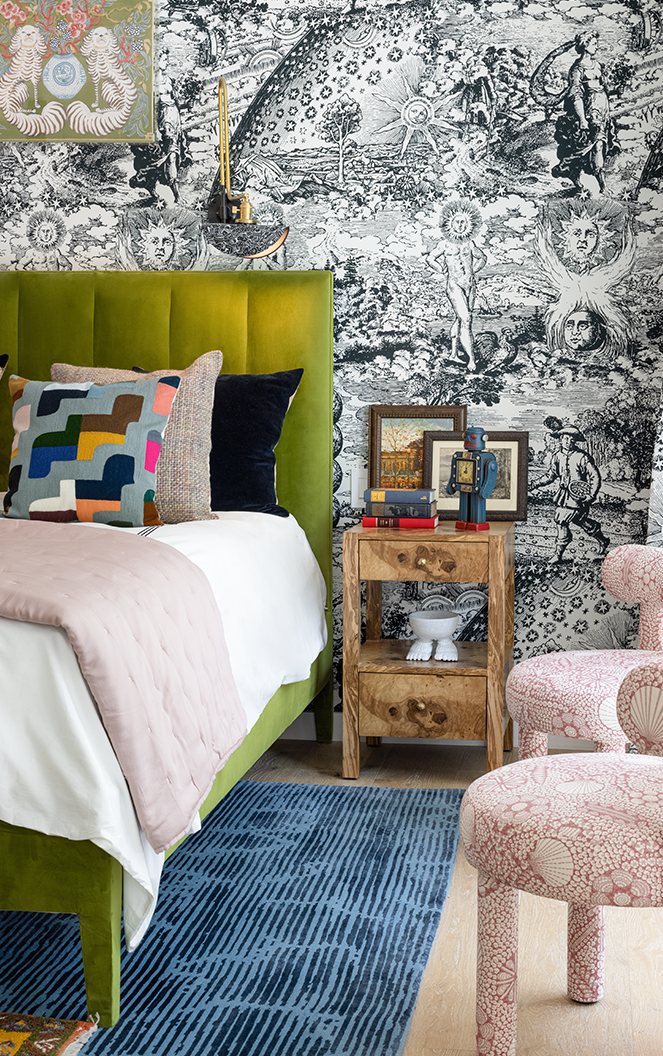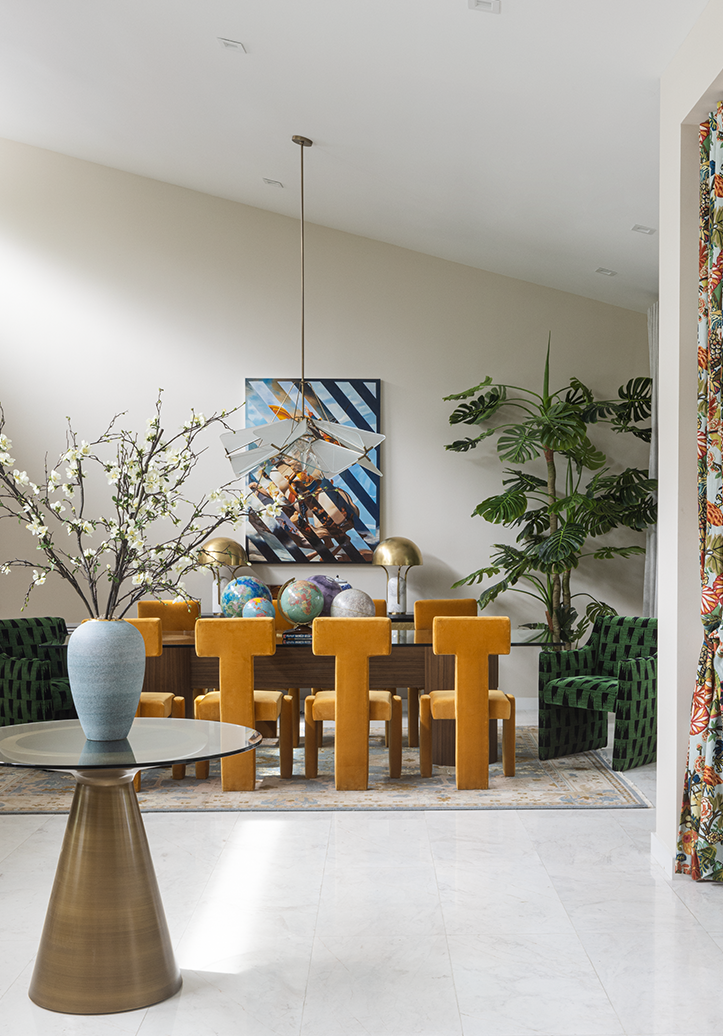
“In interior design, emphasis is all about creating a focal point,” explains designer Dan Lovatt. “It should be something that commands your attention for the right reason and draws the eye around the room.”
In essence, emphasis in interior design is a strategic way of ensuring viewers are focused on a specific feature or design component within a space. However, the trick is to do it in a way that feels subtle — to ensure the entire interior design scheme doesn’t feel overshadowed or dominated.
For instance, when considering a room with a striking marble fireplace with strong architectural features, placing too much color and pattern alongside such decorative elements could result in a space that feels jarring, with each component fighting to stand out. That’s why opting for a more neutral color scheme, or something more tonal, can actually help accentuate such inherent features within a space, celebrating them and allowing you to appreciate the beauty within them.
What is Emphasis in Interior Design?

Speaking with Alex Alonso, the creative force behind US design studio, Mr Alex Tate, the designer shares how emphasis in interior design is about the hierarchy of design and focus.
“Every room has a natural focal point (good or bad) which may come from an architectural detail (such as large windows, an archway, high/low ceilings) or its shape (i.e., long, narrow, square),” he explains. “I like evaluating the space in its simplest form to establish whether we want to elevate that detail or work around it with the design. We may want to acknowledge that focal point and as such, complement it or downplay it altogether.”
For interior designer Dan Lovatt, it is about guiding the eye purposefully, so the room tells a story. “A well-placed focal point adds drama and interest, giving the space character and identity,” he explains.
Through creating a visual hierarchy, it also allows for contrast to occur within a space, be that amongst furniture pieces or to visually zone an area. Through this strategic approach, using emphasis in interior design results in a well-balanced environment while adding depth to a space.
How Do You Apply Emphasis in Interior Design?

“I often use contrast in scale of furnishings, a juxtaposition of texture, or painting an architectural detail in a darker shade or gloss finish to highlight its features,” says Dan. “Supersized artworks, high gloss finishes or ceramic lighting, and patterned upholstery can all be easily introduced to add emphasis in your furnishings if the room is lacking in architectural features.”
With Alex Alonso being a maximalist at heart, he utilizes layers to help create focal points within a space. “I like it when the eye travels around the room, left to right and up and down,” he says. “I start with either the lighting, the walls, or the floor as I don’t like to focus on the obvious elements within the room, such as furniture.”
In drawing the eye to more subtle and unexpected elements, such as the walls, ceiling, or a rug, for instance, he explains how it is a process of focusing on secondary elements first and then working your way into the center of the room.
“For example, for one of our projects, in the guest bedroom we went very heavy on the walls and drapery with the pattern that it became moot, but rather the eyes were then drawn up to the treatment on the ceiling that was less busy,” he describes.
What Are the Risks of Using Emphasis in Interior Design?

Despite it feeling straightforward to place emphasis on certain features in a space, there is a right and wrong way to achieve the desired outcomes.
Being clear on the purpose behind it from the outset really helps. “While adding emphasis is powerful, overusing it can make a room feel chaotic or disjointed,” warns Dan Lovatt.
“Balance in interior design comes from restraint — allowing space to breathe, using neutral elements that support the focal point, and ensuring the eye has moments of rest," he adds. "If everything is competing for attention, nothing stands out and it can feel cluttered and overwhelming.”
So, when approaching your next project, begin the planning of a scheme by carefully deciding which features you want to celebrate and accentuate before adding color, pattern, or texture to do so.
Sometimes, it can even be as simple as the placing of an artwork or wall light to create the positive space needed to guide the eyes in the right direction.







